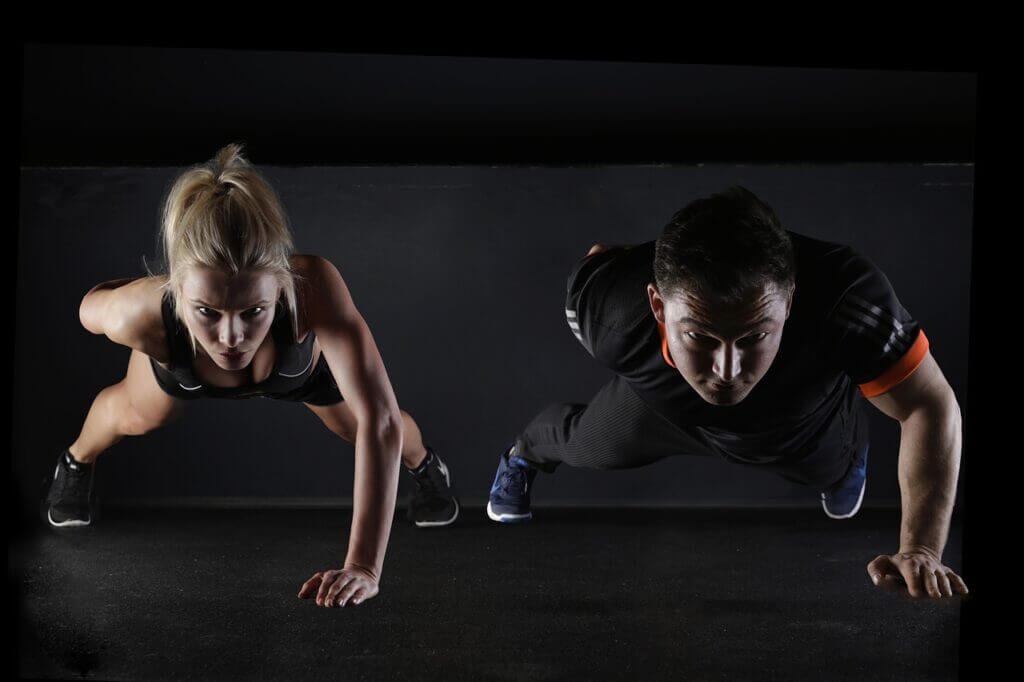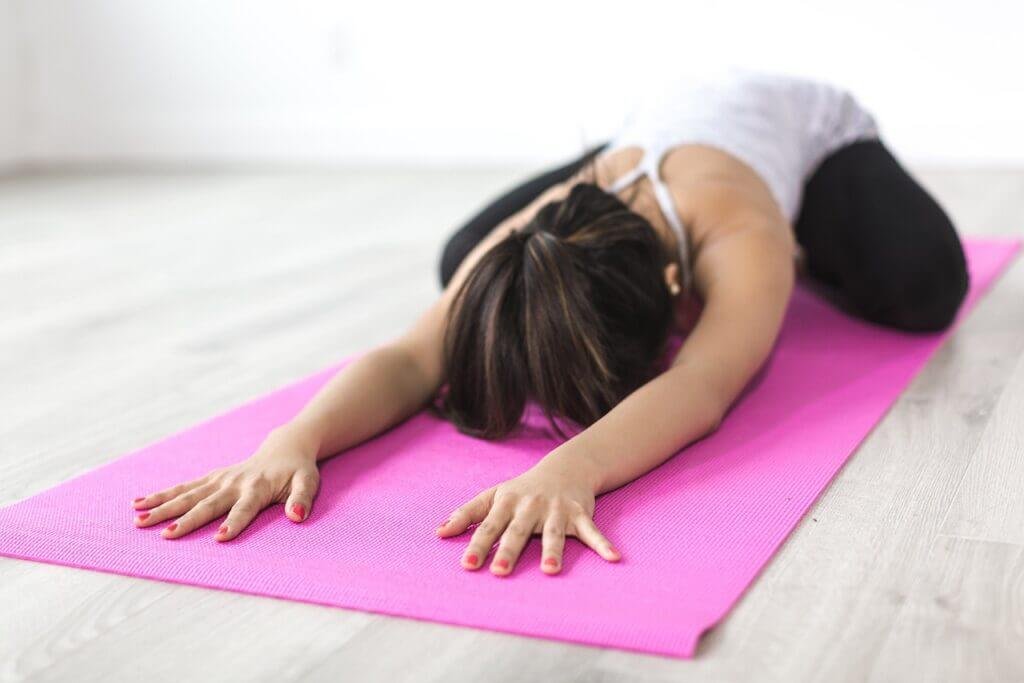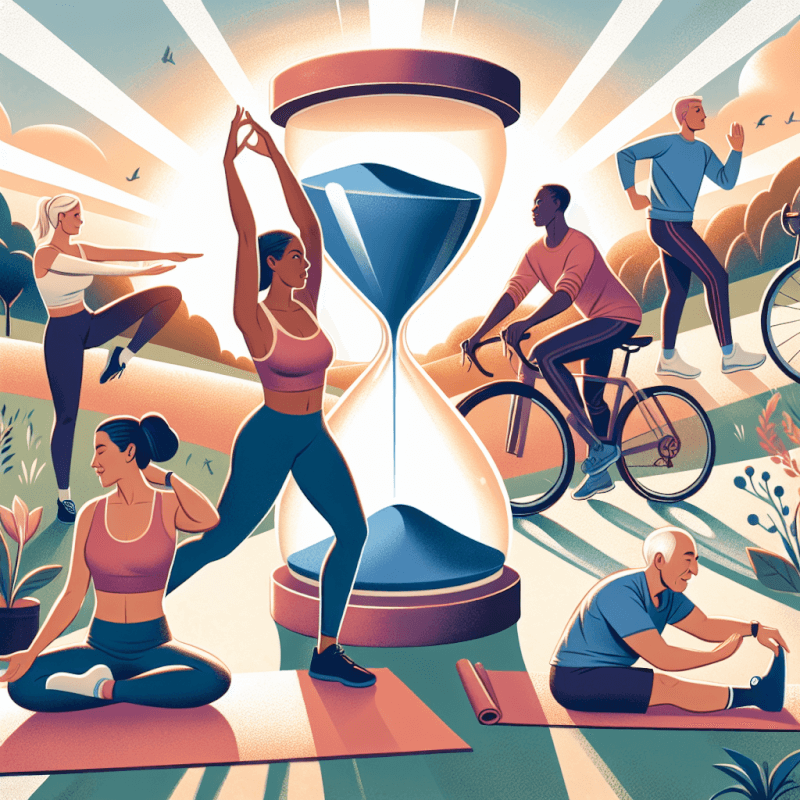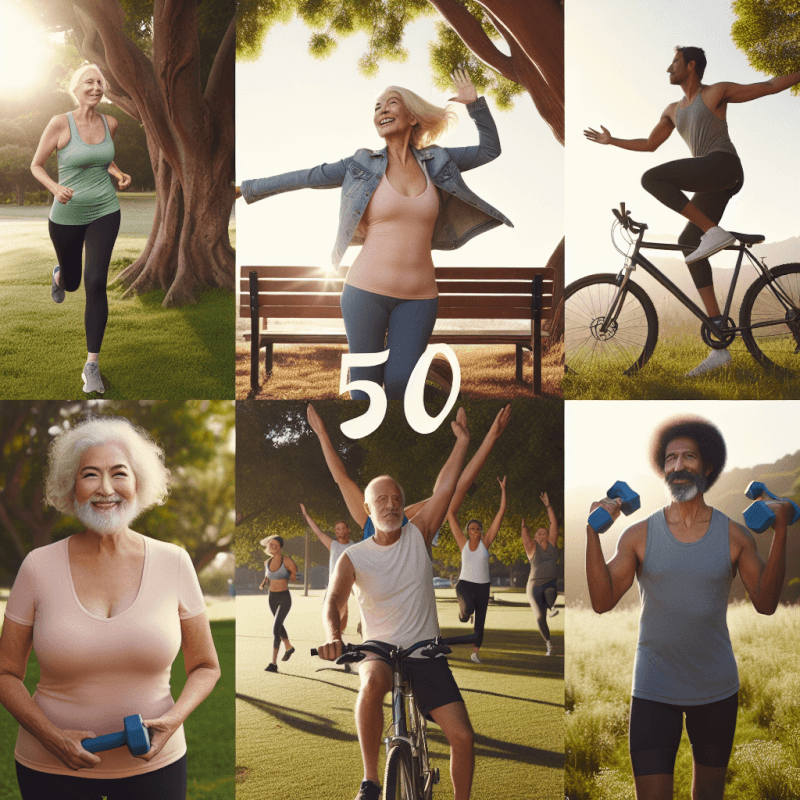Congratulations on reaching the remarkable milestone of turning 50! As you embark on this exciting chapter of your life, it’s important to prioritize your health and well-being. In this article, we will explore some valuable tips and insights on how to stay fit and maintain an active lifestyle at 50. Embrace this new adventure with open arms, because age is just a number when it comes to leading a healthy and fulfilling life.

Benefits of Exercise at 50
Improves cardiovascular health
Engaging in regular exercise at the age of 50 comes with numerous benefits, and one of the most significant is enhanced cardiovascular health. Exercise helps to strengthen your heart and improve its efficiency in pumping blood throughout your body. By regularly engaging in activities that increase your heart rate, such as brisk walking, cycling, or swimming, you can lower your risk of developing heart disease and improve your overall cardiovascular function. Exercise also helps to regulate blood pressure and cholesterol levels, further supporting a healthy heart.
Increases muscle strength and flexibility
As we age, our muscles tend to lose strength and flexibility. However, with the right exercise routine, you can counteract this natural process. Strength training exercises, which target major muscle groups, promote muscle growth and increase overall strength. By incorporating resistance bands or weights, you can gradually challenge your muscles and improve their tone and endurance. Additionally, flexibility exercises, such as stretching and yoga, help to maintain or improve your range of motion and keep your muscles agile and limber.
Boosts metabolism and weight management
Metabolism tends to slow down with age, which can make it more challenging to maintain a healthy weight. Regular exercise can help rev up your metabolism and aid in weight management. By engaging in cardiovascular exercises that elevate your heart rate, you can burn calories and increase your daily energy expenditure. Additionally, strength training exercises help to build lean muscle mass, which boosts your metabolism even at rest. With a combination of these exercises, you can maintain a healthy weight and prevent age-related weight gain.
Enhances bone density and reduces risk of osteoporosis
As you reach the age of 50, your bones become more susceptible to loss of density and strength, increasing the risk of osteoporosis. However, exercise can significantly improve your bone health and reduce the chances of developing this condition. Weight-bearing exercises, such as walking, jogging, or dancing, put stress on the bones, stimulating them to become denser and stronger. Additionally, resistance training exercises, such as lifting weights, help to build muscle, which in turn strengthens the bones. By incorporating a well-rounded exercise routine, you can maintain or even enhance your bone density and reduce the risk of osteoporosis.
Improves mental health and reduces risk of cognitive decline
Exercise not only benefits your physical health but also plays a crucial role in enhancing your mental well-being. Physical activity releases endorphins, which are known as “feel-good” hormones, and can help reduce symptoms of anxiety and depression. Regular exercise can also improve cognitive function and reduce the risk of age-related cognitive decline, including conditions like dementia and Alzheimer’s disease. By engaging in exercise at the age of 50, you can improve your overall mental well-being, sharpen your cognitive skills, and maintain a positive mindset.
Consulting a Medical Professional
Pre-exercise medical evaluation
Before starting any exercise program, it is important to consult with a medical professional. This step is especially crucial if you have any pre-existing health conditions or concerns. A medical evaluation will help determine if you are physically capable of engaging in certain types of exercises and whether you need any modifications or precautions. Your health professional will assess your overall health, take note of any medications you may be on, and provide guidance tailored to your specific needs.
Understand any existing health conditions
If you have any existing health conditions, it is essential to understand how exercise may impact them. Certain exercises may be contraindicated or require modifications based on your condition. For example, if you have arthritis, high blood pressure, or a heart condition, your medical professional can provide guidance on exercises that are safe and beneficial for you. By understanding your health conditions and working closely with your medical professional, you can ensure that your exercise routine is both effective and safe.
Seek advice on exercise limitations or modifications
Depending on your individual health needs, there may be certain limitations or modifications to consider when designing your exercise program. Your medical professional can provide valuable advice on exercises to avoid, proper form and technique to prevent injury, and modifications that can make exercises more accessible. This guidance will help you create a well-rounded and personalized exercise routine that takes into account your unique circumstances.
Choosing the Right Exercise Program
Consider personal preferences and interests
When selecting an exercise program, it is important to consider your personal preferences and interests. Choose activities that you enjoy and look forward to, as this will increase your motivation and likelihood of sticking with the program. Whether it’s dancing, hiking, swimming, or playing a sport, finding activities that bring you joy will ensure that exercise becomes a fulfilling part of your daily routine.
Focus on both cardiovascular and strength training exercises
A well-rounded exercise program should include a combination of cardiovascular and strength training exercises. Cardiovascular exercises, such as brisk walking, cycling, or swimming, elevate your heart rate and improve your cardiovascular fitness. Strength training exercises, on the other hand, help build muscle mass, improve bone density, and enhance overall strength. By incorporating both types of exercises, you can maximize the benefits of your workout routine and promote overall physical fitness.
Incorporate flexibility and balance exercises
In addition to cardiovascular and strength training exercises, it is essential to include flexibility and balance exercises in your routine. These exercises help improve joint mobility, prevent injuries, and maintain or enhance flexibility. Yoga and Pilates are excellent activities that combine both flexibility and balance exercises. Incorporating these elements will ensure that your exercise program is well-rounded and promotes overall physical well-being.
Gradually increase intensity and duration
As you embark on your exercise program, it is crucial to start at a comfortable intensity and gradually increase both intensity and duration. This allows your body to adapt to the demands of exercise without overwhelming it. Gradually increasing the intensity and duration will help prevent injuries and ensure that you can sustain your exercise routine in the long term. A gradual approach also gives you time to hone your technique and build a solid foundation for future advancements.
Cardiovascular Exercise for 50+
Choose low-impact aerobic activities
At the age of 50, it is important to choose low-impact aerobic activities that minimize stress on your joints. Low-impact exercises are gentle on the body while still providing an effective cardiovascular workout. Activities like brisk walking, cycling, swimming, or using an elliptical machine are all excellent options for cardiovascular exercise. These activities allow you to elevate your heart rate and improve your cardiovascular health without subjecting your joints to excessive strain.
Engage in activities like brisk walking, cycling, swimming
Brisk walking is a fantastic cardiovascular exercise that can be easily incorporated into your daily routine. Whether you choose to walk outdoors or on a treadmill, aim to maintain a brisk pace that elevates your heart rate. Cycling is another low-impact activity that provides an excellent cardiovascular workout. Whether you prefer outdoor cycling or stationary biking, it is a great way to get your heart pumping. Swimming is a highly recommended exercise for individuals of all ages, as it is gentle on the joints while still providing a full-body workout.
Aim for at least 150 minutes of moderate-intensity exercise per week
To maintain optimal cardiovascular health, aim for at least 150 minutes of moderate-intensity exercise per week. This can be achieved by engaging in activities like brisk walking, cycling, or swimming for 30 minutes a day, five days a week. If you prefer more vigorous activities, you can aim for 75 minutes of high-intensity exercise per week. Splitting your workouts into smaller sessions throughout the day is also an effective way to reach your weekly exercise goal.

Strength Training for 50+
Start with bodyweight exercises
If you’re new to strength training or returning after a hiatus, it’s best to start with bodyweight exercises. Bodyweight exercises use your own body as resistance and can be done anywhere, anytime. Examples of bodyweight exercises include squats, lunges, push-ups, and planks. These exercises target major muscle groups and help build strength and endurance. Starting with bodyweight exercises allows you to improve your form and gradually increase the intensity as you become more comfortable.
Incorporate resistance bands or weights
Once you have established a foundation with bodyweight exercises, you can progress to incorporating resistance bands or weights into your strength training routine. Resistance bands offer a convenient and affordable way to add resistance to your exercises. They come in different levels of resistance to accommodate different fitness levels. If you prefer using weights, start with lighter weights and gradually increase the load as your strength improves. Working with resistance bands or weights helps to further challenge your muscles and promote strength development.
Target major muscle groups 2-3 times a week
To achieve the maximum benefit from strength training, it is recommended to target major muscle groups two to three times a week. This allows for sufficient recovery time between workouts while still promoting muscle growth and strength development. Focus on exercises that target your legs, hips, back, chest, shoulders, and arms. Incorporating a variety of exercises that work different muscle groups ensures a well-rounded and balanced strength training routine.
Focus on proper form and technique
When engaging in strength training exercises, it is crucial to prioritize proper form and technique. This not only ensures that you are targeting the intended muscles but also reduces the risk of injury. It may be helpful to work with a qualified fitness professional or watch instructional videos to learn proper form. Starting with lighter weights or resistance and gradually increasing as you master the technique will also help maintain proper form throughout your workouts.
Flexibility and Balance Exercises
Include yoga or Pilates in your routine
Flexibility and balance exercises are essential for maintaining overall physical well-being, especially as we age. Yoga and Pilates are excellent activities that incorporate both flexibility and balance exercises. These practices focus on controlled movements, deep stretching, and body awareness, which help improve joint mobility, flexibility, and balance. Consider incorporating yoga or Pilates classes into your exercise routine to enhance your flexibility and optimize your balance.
Practice stretching exercises for all major muscle groups
Regular stretching exercises are key to maintaining or improving flexibility. Incorporate dedicated stretching sessions into your exercise routine, focusing on all major muscle groups. Stretching exercises can be done before and after your workouts to warm up the muscles and prevent injury. Additionally, stretching can be incorporated into your daily activities, such as stretching while watching TV or taking short breaks during work hours. Aim to hold each stretch for 20-30 seconds and repeat 2-3 times.
Incorporate balance exercises to prevent falls
As we age, balance becomes increasingly important to prevent falls and maintain independence. Incorporating balance exercises into your routine can improve stability and proprioception, which is the body’s sense of its position in space. Simple exercises like standing on one leg, heel-to-toe walking, or using a balance board can significantly improve your balance over time. Gradually challenge yourself by increasing the difficulty of the exercises or incorporating dynamic movements.

Importance of Warm-up and Cool-down
Perform dynamic movements as part of warm-up
Before every workout, it is crucial to perform a warm-up routine that includes dynamic movements. Dynamic movements, such as arm circles, leg swings, or light jogging, gradually increase your heart rate and prepare your body for exercise. These movements help to loosen up the muscles, increase blood flow, and warm up the joints, reducing the risk of injury during your workout. Aim to perform dynamic movements for 5-10 minutes before your main workout.
Gradually increase intensity during warm-up
During your warm-up, it is important to gradually increase the intensity of your movements. This allows your body to adjust to the demands of the workout and helps prevent any sudden strain on your muscles or joints. As you progress through your warm-up routine, gradually increase the speed or range of motion of your dynamic movements. This progressive increase in intensity will prepare your body for the main workout and optimize your performance.
Cool down with static stretching exercises
After completing your main workout, it is essential to cool down with static stretching exercises. Static stretching involves holding each stretch for 20-30 seconds without any bouncing or rapid movements. This helps to lengthen the muscles, reduce muscle soreness, and improve flexibility. Focus on stretching the muscles you targeted during your workout, as well as any areas that feel tight or tense. Cooling down with static stretching promotes muscle recovery, reduces the risk of injury, and prepares your body for the next exercise session.
Allow time for the body to recover after exercise
Allowing your body time to recover after exercise is just as important as the exercise itself. This includes rest days between intense workouts to give your muscles time to repair and rebuild. Overtraining can lead to fatigue, decreased performance, and an increased risk of injury. Additionally, getting sufficient sleep is crucial for recovery and muscle repair. Aim for 7-9 hours of quality sleep each night to optimize your body’s recovery process. Incorporating relaxation techniques such as meditation or gentle stretching can also help promote rest and recovery.
Addressing Joint Pain and Injury Risk
Listen to your body and modify or avoid exercises causing pain
As you progress with your exercise routine, it is important to listen to your body and be aware of any discomfort or pain. If certain exercises are causing pain or discomfort in your joints, it may be necessary to modify or avoid those movements altogether. Seek guidance from a medical professional or qualified fitness instructor to find alternative exercises that are safe and effective for your specific needs. Remember, it is better to modify your routine than to push through pain and risk injury.
Use proper footwear and supportive equipment
To reduce the risk of joint pain and injury, it is essential to wear proper footwear and use supportive equipment when necessary. Invest in a good pair of athletic shoes that provide cushioning, stability, and support for your feet and ankles. If you have specific orthopedic concerns, consult with a foot specialist to find shoes that are specifically designed for your needs. For activities that put extra strain on your joints, such as running or high-impact aerobics, consider using protective equipment such as knee braces or joint supports.
Seek medical attention if pain persists or worsens
If you experience persistent or worsening joint pain, it is important to seek medical attention. While exercise can have numerous benefits, it is crucial to ensure that you are not contributing to any underlying conditions or causing further damage to your joints. A medical professional can provide a proper diagnosis, recommend appropriate treatment, and guide you on how to modify your exercise routine to accommodate your specific situation. Don’t ignore persistent pain or discomfort, as early intervention can prevent further complications.

Staying Motivated and Consistent
Set specific and achievable goals
Setting specific and achievable goals is key to staying motivated and consistent with your exercise routine. Identify what you want to accomplish through exercise, whether it’s improving cardiovascular fitness, increasing strength, or maintaining a healthy weight. Break your larger goals into smaller, measurable milestones that you can work towards. Celebrate your achievements along the way to stay motivated and keep pushing forward.
Find a workout buddy or join group fitness classes
Working out with a partner or joining group fitness classes can provide a sense of accountability and make exercise more enjoyable. Find a workout buddy who shares similar fitness goals and schedules, and plan regular exercise sessions together. If group fitness classes appeal to you, there are a variety of options available at most fitness centers, catering to different interests and fitness levels. Exercising with others can provide a social aspect to your workouts and help you stay motivated.
Keep a workout journal to track progress
Keeping a workout journal is a fantastic way to track your progress and reflect on your achievements. Record the exercises you performed, the duration and intensity of each session, and how you felt during and after the workout. This journal will serve as a reminder of how far you’ve come and can help identify any patterns or areas in need of improvement. Tracking your progress can be highly motivating and help you stay focused on your fitness journey.
Mix up your routine to prevent boredom
To prevent boredom and maintain motivation, it’s important to mix up your exercise routine. Trying new activities or varying the intensity and duration of your workouts keeps things interesting and challenges your body in different ways. Explore different types of exercise classes, such as dance fitness, martial arts, or circuit training, to keep yourself engaged and excited about your workouts. Variety not only makes exercise more enjoyable but also helps prevent plateauing and ensures you continue to make progress towards your goals.
Importance of Rest and Recovery
Allow for rest days between intense workouts
Rest days are an integral part of any exercise routine, especially as you reach the age of 50. Giving your body time to recover between intense workouts helps prevent overtraining, reduces the risk of injury, and allows for muscle repair and growth. Schedule rest days into your weekly exercise plan and use this time to engage in gentle activities like walking, stretching, or yoga. Embrace rest days as a vital component of your overall fitness journey.
Get sufficient sleep to aid in recovery and muscle repair
Sleep plays a fundamental role in recovery and muscle repair after exercise. Aim for 7-9 hours of quality sleep each night to optimize your body’s recovery process. During sleep, the body releases growth hormones that aid in tissue repair and regeneration. Adequate sleep also helps to regulate hormone levels and supports overall immune function. Prioritize sleep as an essential aspect of your fitness routine to ensure optimal recovery and maximize the benefits of your workouts.
Incorporate relaxation techniques such as meditation or gentle stretching
In addition to restful sleep, incorporating relaxation techniques into your routine can further promote rest and recovery. Activities such as meditation, deep breathing exercises, or gentle stretching can help alleviate stress, reduce muscle tension, and promote a state of relaxation. Implementing these techniques before bed or during times of high stress can improve sleep quality and aid in the recovery process. By taking the time to relax and rejuvenate, you are supporting your body’s ability to repair and rebuild after exercise.
In conclusion, exercise at the age of 50 offers numerous benefits for both physical and mental well-being. Whether it’s improving cardiovascular health, increasing strength and flexibility, managing weight, enhancing bone density, or boosting mental health, exercise is a powerful tool that can improve your overall quality of life. By consulting a medical professional, choosing the right exercise program, engaging in cardiovascular exercise, incorporating strength training, flexibility, and balance exercises, and addressing joint pain and injury risks, you can create a comprehensive workout routine that suits your needs and abilities. Staying motivated and consistent through goal-setting, finding support, keeping track of your progress, and embracing rest and recovery are essential for long-term success. Take the step towards a healthier and more active lifestyle at 50 and experience the tremendous benefits of exercise for yourself.



